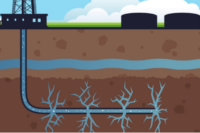
|
During the Fall 2010 college football season, University of Notre Dame student/employee Declan Sullivan was killed while filming the school’s football team practice from a scissor lift. A scissor lift is a portable, hydraulic-powered lift with a platform that can be raised into the air directly above the base. Reportedly, Sullivan, who had not been trained to properly operate the scissor lift, raised the lift over 39 feet into the air to film the practice. The wind gusts that day were more than 50 miles per hour. The high winds blew the lift over, killing him.
Hazards
Organizations that have workers, including students who are employees, who use scissor lifts to film events and functions must address the hazards associated with this equipment. These hazards can include:
• The lift falling over or a worker slipping off the platform if the lift is:
o used during bad weather or high winds
o positioned on soft or uneven ground, or on weak utility covers (e.g., underground sprinkler valve boxes)
o overloaded with heavy objects
o used with guardrails removed
o driven over uneven, unstable ground, or surface in poor condition, with the lift in an elevated position, or
o used with brakes that are not properly set
• A worker being electrocuted if the lift makes contact with electrical lines.
How to Reduce Hazards
• Establish and follow safe work practices that include, but are not limited to:
o Inspecting controls and components before use
o Selecting work locations with firm and level surfaces away from hazards that can cause the lift to be unstable (e.g., drop-offs or holes, slopes, bumps or ground obstructions, or debris)
o Selecting work locations that are clear of electrical power sources (e.g., power lines, transformers) – by at least 10 feet – and other overhead hazards (e.g., other utilities, branches, overhangs, etc.)
o Operating lifts only during weather conditions that are safe for use (e.g., not in high winds, rain, snow, sleet, etc.)
o Moving the lift to/from a work location safely, with the lift lowered, unless following safe practices allowed by the manufacturer
o Setting the breaks and stabilizing the lift before raising it
o Ensuring that the lift is not overloaded
o Working safely from the lift (e.g., do not remove guardrails or stand on them for extra height)
o Reporting problems and malfunctions
• Train workers on, and make sure workers follow, established safe work practices and manufacturers’ recommendations for operating scissor lifts safely
• Allow only trained workers to use scissor lifts, and make sure those workers show they can use a scissor lift properly
• Make sure that the scissor lift has a guardrail system that protects workers from falling, and
• Test, inspect, and maintain scissor lifts according to the manufacturer’s recommendations
Additional Resources
Many scissor lifts are covered under OSHA's scaffolding standard. For technical assistance, please refer to OSHA's eTool and Other Resources on Scaffolding.
The Indiana Occupational Safety and Health Administration issued a letter and outreach materials on Safe Work Practices for Lifts.
The American National Standards Institute (ANSI) has standards for manufacturing, owning, and operating scissor lifts. They can be found in ANSI A92.3-2006 (Manually Propelled Elevating Aerial Platforms) and A92.6-2006 (Self-Propelled Elevating Work Platforms).
The International Powered Access Federation (IPAF) has a training program for aerial and scissor lifts. For a fee, successful trainees receive a one day, hands-on aerial lift training and are awarded the PAL Card (Powered Access Licence) as proof of training. More information is available at IPAF's website.
Help for Employers
OSHA provides a free On-Site Consultation for small businesses with fewer than 250 workers at a site (and no more than 500 employees nationwide). On-site consultation services are separate from enforcement and do not result in penalties or citations. To locate the OSHA Consultation Office nearest you, visit OSHA's website or call 1-800-321-6742.
OSHA also has Compliance Assistance Specialists throughout the nation who can provide general information about OSHA standards and compliance assistance resources. Contact your local OSHA office for more information.
Worker Rights
Workers have the right to:
• Working conditions that do not pose a risk of serious harm.
• Receive information and training (in a language and vocabulary they understand) about workplace hazards, methods to prevent them, and the OSHA standards that apply to their workplace.
• Review records of work-related injuries and illnesses.
• Get copies of test results done to find and measure hazards.
• File a complaint asking OSHA to inspect their workplace if they believe there is a serious hazard or that their employer is not following the OSHA rules. When requested, OSHA will keep all identities confidential.
• Use their rights under the law without retaliation or discrimination.
For additional information on Workers' Rights, Employer Responsibilities, and other services OSHA offers, visit OSHA's Workers page.
Contact OSHA
For questions or to get information or advice, to report an emergency, report a fatality or catastrophe, order products, or to file a complaint, contact your nearest OSHA office, visit OSHA's website, or call OSHA at 1-800-321-OSHA (6742), TTY 1-877-889-5627. OSHA will keep your information confidential.
Many states operate their own OSHA-approved safety and health program. For further information, please visit OSHA's State Occupational Safety and Health Plans page.



